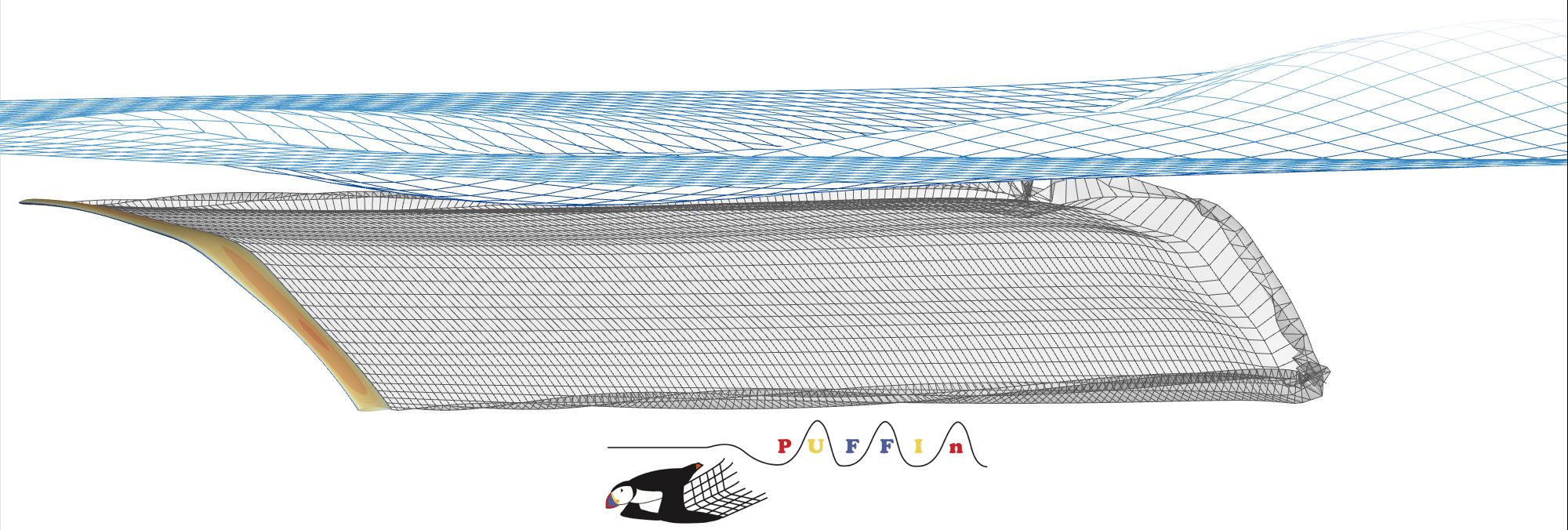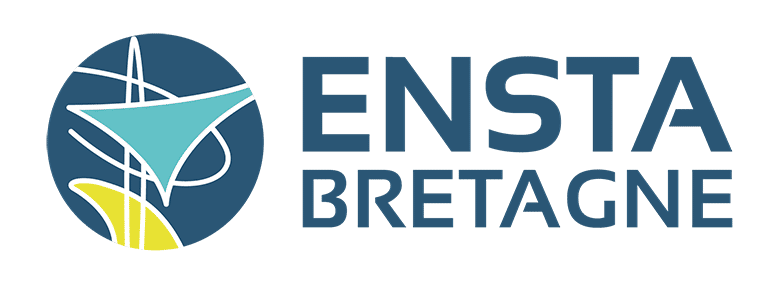
PUFFIn is a free code dedicated to the prediction of 3D hydrofoils performance operating near the free surface. It is designed to be easy to use, fast and has been validated against the existing literature and experimental results. It is based on the potential flow theory and the Boundary Element Method. The code is written in Fortran and the executable is available for Windows and Linux distributions.
Main features of PUFFIn v1.0:
- Steady analysis with free wake model
- Linearized free surface conditions : symmetry, antisymmetry and Neumann-Kelvin conditions
- Multibody computations
- Dynamic positioning to reach target values of lift and side forces
Coming soon with PUFFIn v2.0:
- Unsteady computations
- Non-linear free surface conditions
- Computations with surface piercing hydrofoils
- Hydrofoil modeller to generate the geometry and the mesh
Visualization of the results can be easily done with Tecplot or Paraview.
PUFFIn development is fund by the Carnot institutes for a two-years post-doc fellowship and experiments.
PUFFIn is based on an incompressible potential approach, i.e. the viscous effects are neglected and the flow is supposed to be irrotational and incompressible. A boundary integral equation is solved for the velocity potential. The problem boundaries are discretized using low-order panels (Katz and Plotkin [1]). A non-linear Kutta condition is imposed at the trailing edge of the hydrofoil. The Neumann-Kelvin linear condition is used on the free surface (Newman [2]) and is discretized using the finite difference method (Dawson [3]). Additional informations can be found in the PUFFIn documentation.
[1] Katz, J., & Plotkin, A. (2001). Low-speed aerodynamics. Cambridge university press
[2] Newman, J. N. (2018). Marine hydrodynamics. The MIT press.
[3] Dawson, C. W. (1977). A practical computer method for solving ship-wave problems. In Proceedings of Second International Conference on Numerical Ship Hydrodynamics (pp. 30-38).
Steady analysis
Steady computations of the unbounded flow around a 3D hydrofoil can be done with PUFFIn. Typical computations with the free wake model (Fig.1) takes around one minute to obtain convergence of the forces. The influence of the free surface can also be taken into account with the Neumann-Kelvin condition. As presented in Fig. 2, the free surface elevation predicted by PUFFIn is similar to RANSE (Reynolds Averaged Navier-Stokes Equation) results.
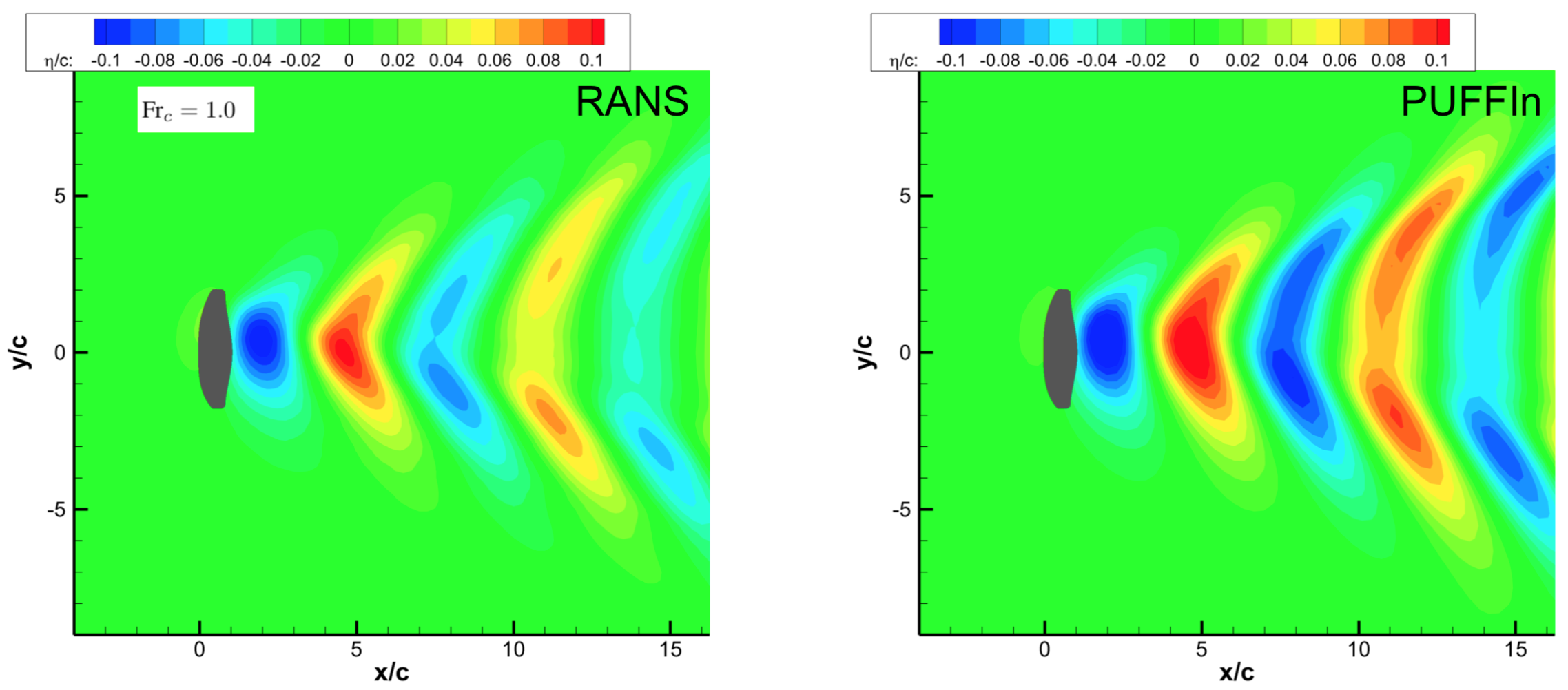
Multibody configuration
PUFFIn allows to perform computations with multibody configurations. Fig. 3 shows the pressure coefficient distribution on the front wing (main wing) and rear wing (stabilizer) of a windsurf hydrofoil. The lift created by the stabilizer is strongly affected by the front wing wake. To avoid potential singularities when the front wing wake impinges the rear wing, a finite-core vortices model is used.
Automatic positioning
To facilitate the comparison between different hydrofoil geometries, an automatic positioning method (Ploe [1]) is available in PUFFIn. The user can provide target lift and side forces and the rake and leeway angles are automatically changed to reach these values. In the example of Fig. 4, the leeway angle increases by 8° and the rake angle decreases by 1° from the initial position to reach the target forces Fy=400 N and Fz=1200 N.
Ploé, P. (2018). Surrogate-based optimization of hydrofoil shapes using RANS simulations. Doctoral dissertation, École centrale de Nantes .
Unsteady analysis (soon in version 2.0)
In the version 2.0 of PUFFIn, it is possible to perform unsteady computations. The foil movement can be provided by the user, as presented in Fig. 5 where a heaving motion is imposed.
The code has been validated against the existing litterature for 2D and 3D configuration. As example, the influence of the aspect ratio of a NACA0012 foil on the lift coefficient in an unbounded domain is studied in Fig. 1. The results are similar to the ones obtained by Ozdemir et al. [1] with BEM.
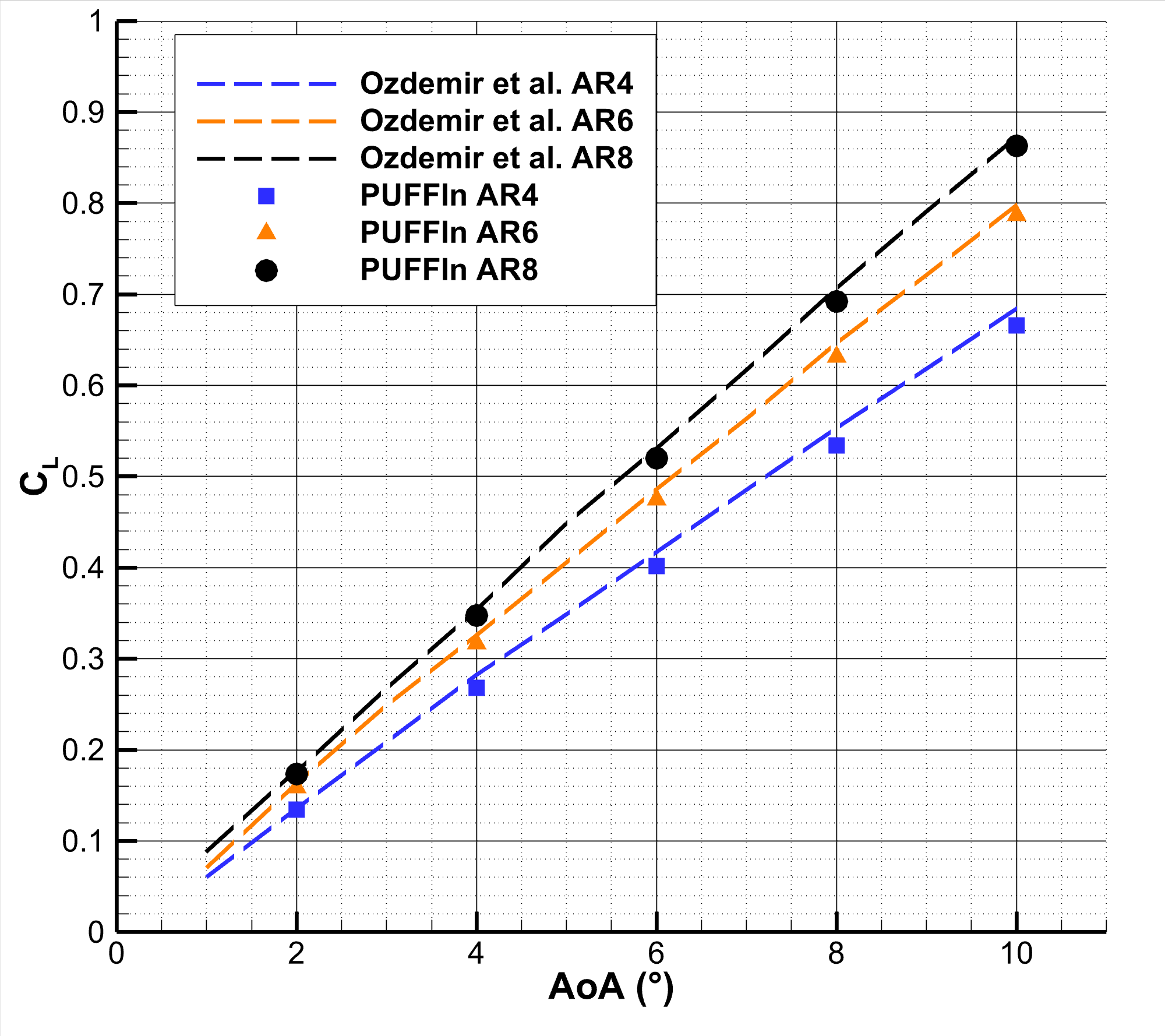
and from Ozdemir [1]
The code has also been validated for computations with free surface. In Fig. 2 the predictions of PUFFIn are compared with numerical and experimental results for a 2D NACA4412 at Froude number Fr=1. The variations of the hydrodynamic coefficients with submergence depth predicted by PUFFIn are in good agreement with the BEM results from Filippas and Belibassakis [2]. The pressure coefficient distribution obtained with PUFFIn is also similar to the experiments of Ausman [3] for a submergence depth ratio h/c=0.6.
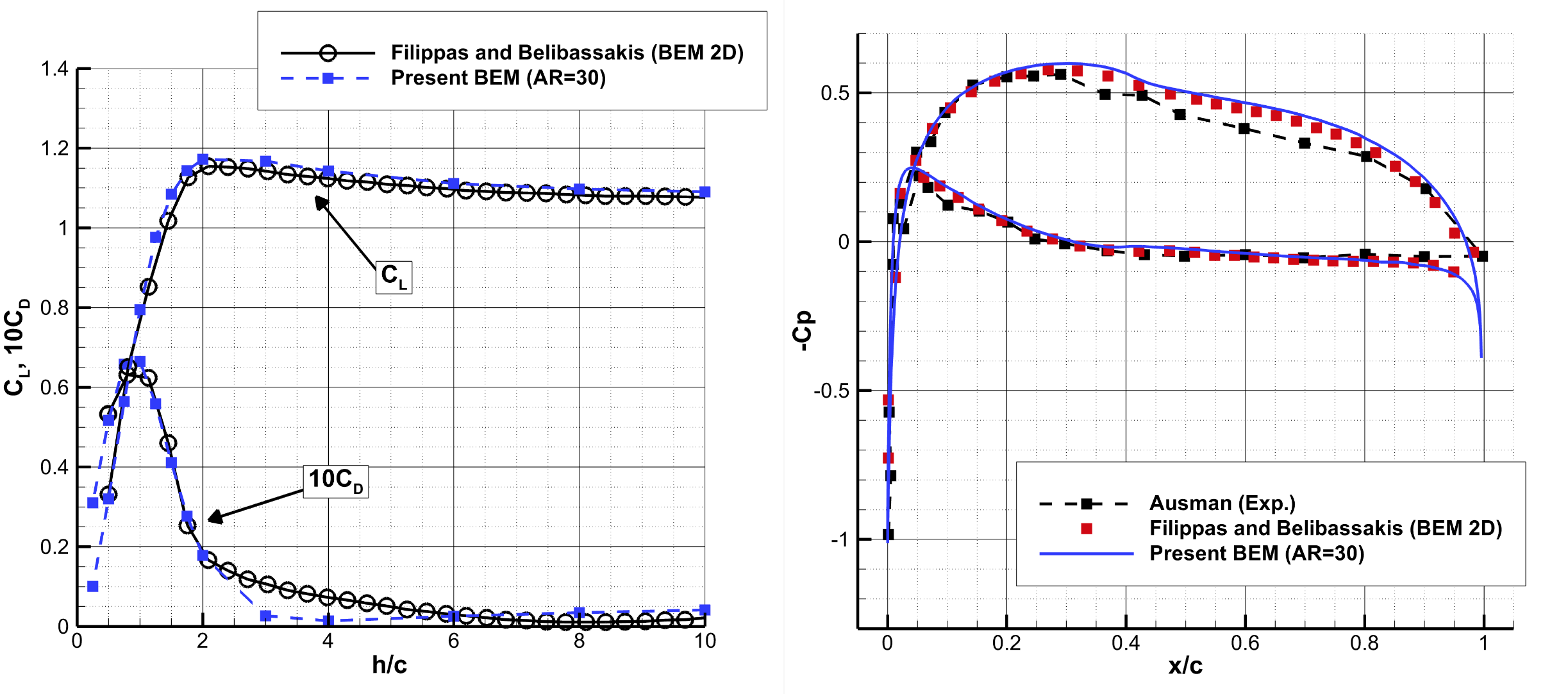
Right: pressure coefficient for h/c=0.6.
[1] Ozdemir, Y. H., Cosgun, T., & Barlas, B. (2021). Wave field generated by finite-span hydrofoils operating beneath a free surface. Brodogradnja: Teorija i praksa brodogradnje i pomorske tehnike, 72(1), 145-167.
[2] Filippas, E. S., & Belibassakis, K. A. (2014). Hydrodynamic analysis of flapping-foil thrusters operating beneath the free surface and in waves. Engineering Analysis with Boundary Elements, 41, 47-59.
[3] Ausman, J. S. (1954). Pressure limitation on the upper surface of a hydrofoil. Ph. D. Thesis in Mechanics Engineering at the University of California.
Perali P., Sacher M., Leroux JB., Wackers J., Augier B., Hauville F., Bot P. (2023). Performance prediction of a hydrofoil near the free surface using a Boundary Element Method: toward multi-fidelity optimization. Article submitted
Faye A., Perali P., Augier B., Sacher M., Leroux JB., Nême A. (2023). Fluid-Structure Interactions response of a composite hydrofoil modelled with 1D beam finite elements. INNOV'SAIL, International conference on innovation in high performance sailing yachts and wind-assisted ships
Nicolas H., Perali P., Sacher M., Bot P. (2023). Boundary Element Method Analysis of 3D Effects and Free-Surface Proximity on Hydrofoil Forces in Varied Operating Conditions. INNOV'SAIL, International conference on innovation in high performance sailing yachts and wind-assisted ships
Perali P., Sacher M., Leroux JB., Wackers J., Augier B., Hauville F., Bot P. (2022). Comparaison de conditions de surface libre linéarisées pour l’étude d’un hydrofoil submergé à l’aide d’une approche potentielle. CFM Congrès Français de Mécanique
If you wish to get updated version of PUFFIn or if you have any questions/remarks, please fill out this form.
Use the following link to download PUFFIn with documentation and examples:
The OptiFoil project partners cannot be held liable for any damage whatsoever resulting from the use of PUFFIn.






